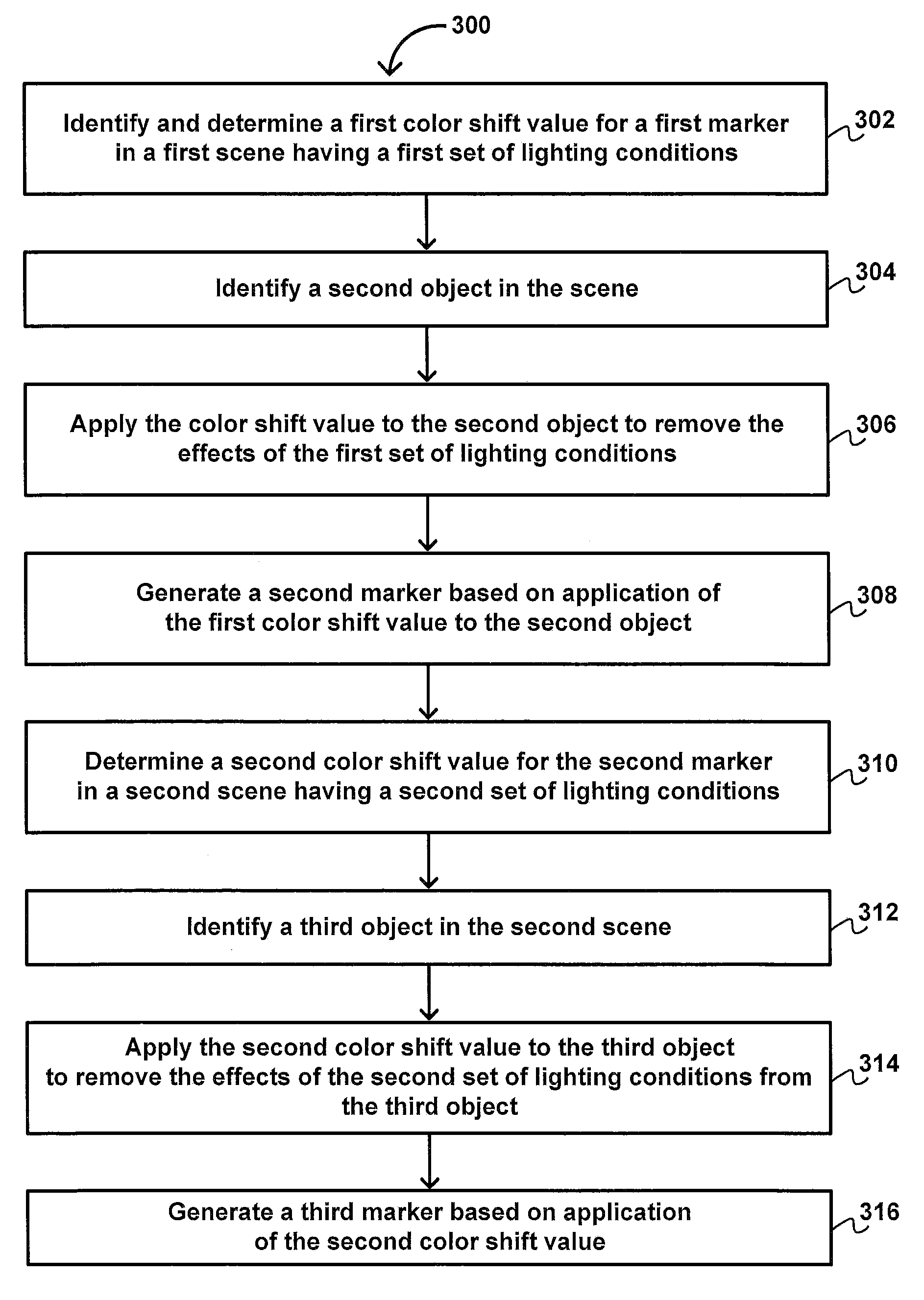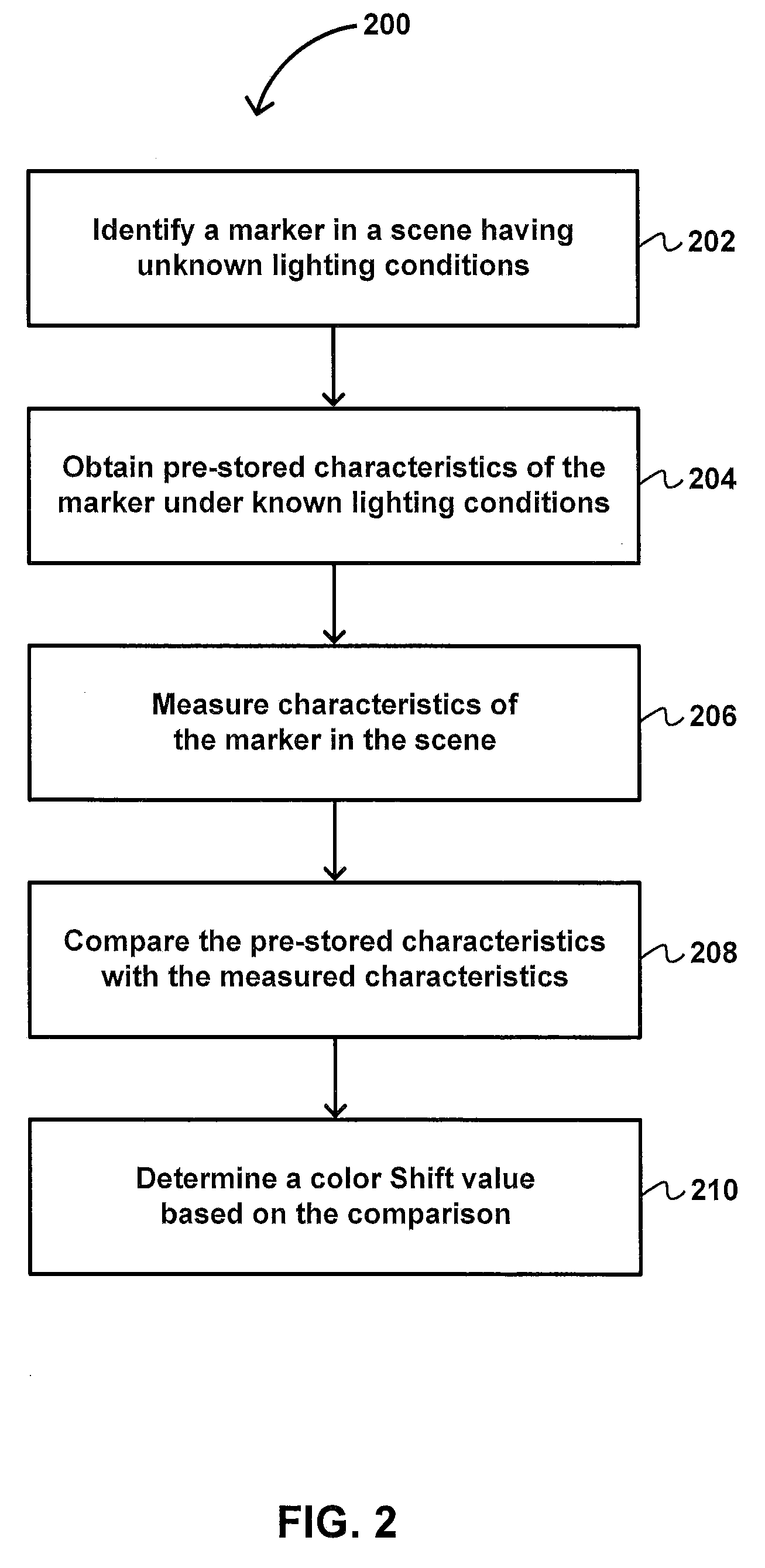System and method of adjusting the color of image objects based on chained reference points, gradient characterization, and pre-stored indicators of environmental lighting conditions
a color and reference point technology, applied in image enhancement, image analysis, instruments, etc., can solve problems such as inability to achieve the effect of adjusting the color of image objects based on chained reference points and gradient characterization
- Summary
- Abstract
- Description
- Claims
- Application Information
AI Technical Summary
Benefits of technology
Problems solved by technology
Method used
Image
Examples
Embodiment Construction
[0037]FIG. 1 illustrates a system 100 for adjusting the color of image objects based on chained reference points and / or color gradients, according to an implementation of the invention. As used herein, the term “image object” may include a representation of an object used to represent and recreate one or more color characteristics (e.g., a value measured in any color space (e.g., a red-green-blue (“RGB”) color value, a cyan-magenta-yellow-black (“CMYK”) value, a color-opponent dimensions “b” and “b” in CIE lab, etc.), an intensity, a hue, a saturation, and etc.) of an object. An “image” (e.g., a photograph, video, etc.) may include one or more image objects. For illustration and not limitation, the object will be described as artwork (e.g., a painting, a print, a photograph, sculpture, etc.) that may be imaged in different environments and therefore may appear to have different colors depending on the lighting conditions of the environment in which the artwork is placed. However, ot...
PUM
 Login to View More
Login to View More Abstract
Description
Claims
Application Information
 Login to View More
Login to View More - R&D
- Intellectual Property
- Life Sciences
- Materials
- Tech Scout
- Unparalleled Data Quality
- Higher Quality Content
- 60% Fewer Hallucinations
Browse by: Latest US Patents, China's latest patents, Technical Efficacy Thesaurus, Application Domain, Technology Topic, Popular Technical Reports.
© 2025 PatSnap. All rights reserved.Legal|Privacy policy|Modern Slavery Act Transparency Statement|Sitemap|About US| Contact US: help@patsnap.com



